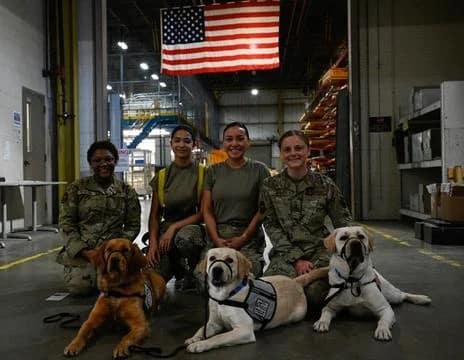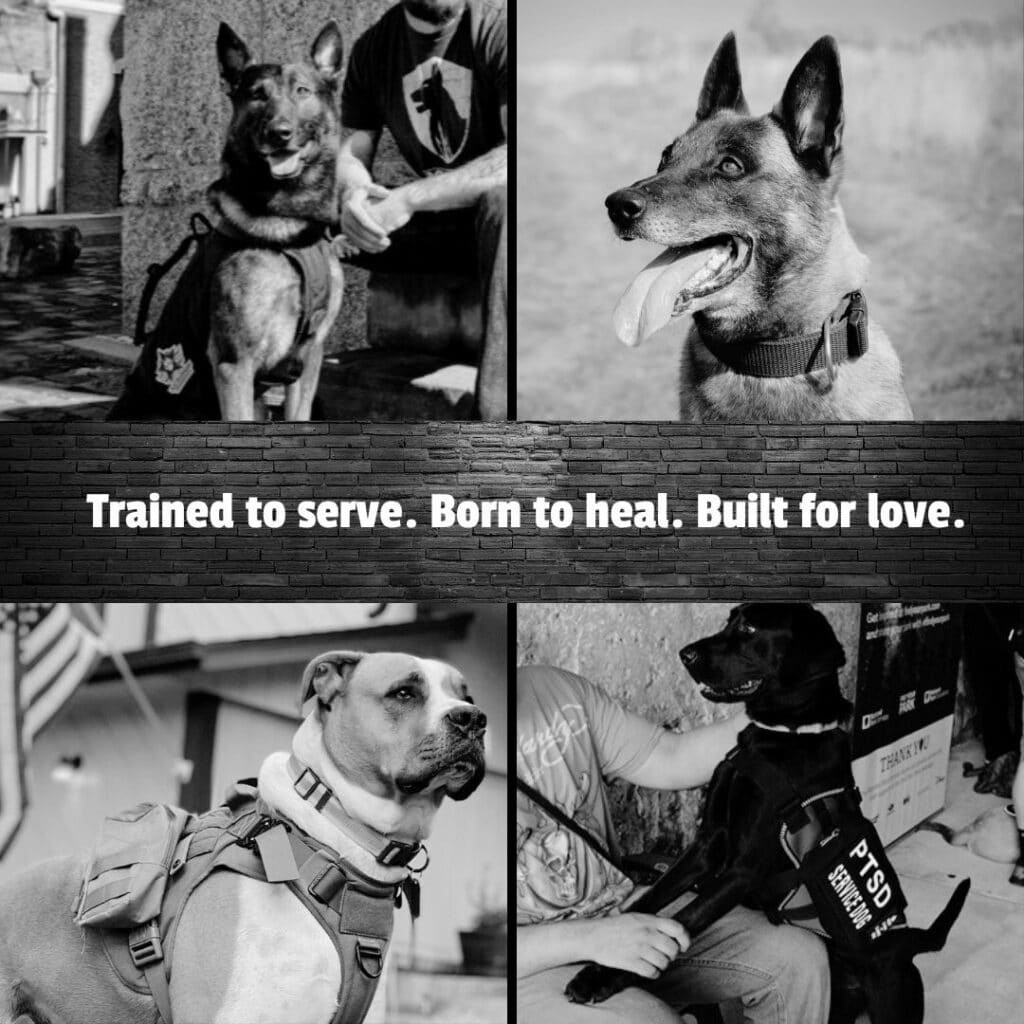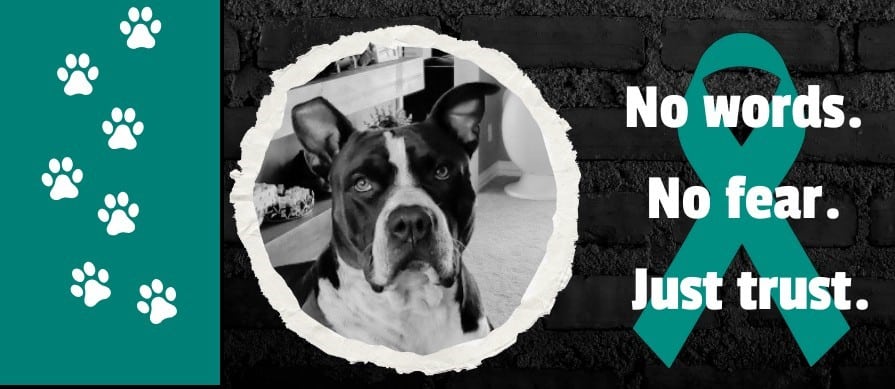Healing with Paws and purpose: How Service Dogs help People with PTSD
June 26, 2025
They don’t wear capes, but they save lives every day. For people living with Post-Traumatic Stress Disorder (PTSD), service dogs provide more than comfort—they are a critical lifeline. These specially trained companions offer emotional support, perform vital tasks, and create a sense of security in a world that often feels unsafe.
As awareness around PTSD grows, so too does understanding of the powerful role psychiatric service dogs play in the healing journey. This blog explores how these incredible animals help, what tasks they perform, and why their impact is both life-changing and lifesaving.
What Is a PTSD Service Dog?

A PTSD service dog is a specially trained assistance animal that helps individuals cope with the effects of post-traumatic stress. Unlike emotional support animals (ESAs), service dogs undergo rigorous, specialized training to perform tasks that directly mitigate psychiatric symptoms.
They are recognized under the Americans with Disabilities Act (ADA), which means they have full public access rights and can accompany their handler virtually anywhere—including restaurants, airplanes, and workplaces.
These dogs aren’t just pets—they’re working partners providing essential daily support for those recovering from trauma.
Who Benefits from a PTSD Service Dog?

PTSD doesn’t look the same for everyone, and service dogs are matched with individuals based on their unique needs. Common recipients include:
- Military Veterans and first responders
- Survivors of sexual assault or domestic violence
- Victims of childhood abuse
- Survivors of accidents, mass shootings, or natural disasters
- Healthcare professionals exposed to trauma
PTSD often includes hypervigilance, panic attacks, nightmares, emotional numbing, and social withdrawal. A service dog can be trained to provide support tailored to those symptoms, enhancing safety and reducing emotional distress.
Life-Saving Support: What PTSD Service Dogs Can Do

Here are a few ways these dogs change lives:
Nightmare Interruption – Trained to wake handlers from nightmares with a nudge or lick, helping reduce sleep disruptions and nighttime anxiety.
Crowd Buffering – The dog creates physical space in crowded areas, reducing panic and hypervigilance.
Room Searches – Some dogs are trained to “clear” a room before the handler enters, providing peace of mind for those with trauma-related fears.
Grounding During Flashbacks – Through nudges or deep pressure therapy (laying across the handler’s chest or lap), the dog helps bring the person back to the present.
Panic Alert – They recognize early signs of anxiety and intervene with pawing or leaning, preventing full-blown panic attacks.
Medication and Phone Retrieval – If the handler is immobilized or in distress, the dog can bring them vital items.
The Training Behind the Transformation

Training a PTSD service dog takes 12 to 24 months, depending on the complexity of tasks required. The process usually includes:
- Obedience and socialization
- Public access training
- Task-specific skills based on the handler’s needs
Dogs are often trained by:
- Nonprofit organizations (e.g., K9s For Warriors, Service Dogs for America)
- Private trainers
- Owner-trainer teams with professional guidance
Not all dogs are suited for this role—it takes exceptional temperament, focus, and adaptability.
Is a Service Dog Right for Everyone with PTSD?

Not necessarily. While these dogs can be life-changing, they’re also a big responsibility. Handlers must commit to ongoing training, daily care, and forming a strong bond.
Considerations include:
- Lifestyle compatibility
- Physical ability to handle the dog
- Access to training resources
- Stable housing and finances
For those who aren’t ready for a service dog, emotional support animals or therapy dogs can still offer powerful companionship.
Veterans and Service Dogs: A Special Bond

Veterans make up one of the largest populations served by PTSD service dog programs. For many, the bond between soldier and canine mimics the camaraderie of their unit—only this time, the mission is healing.
Programs like Paws for Purple Hearts, K9s For Warriors, and Warrior Canine Connection specialize in helping Veterans, often at no cost.
Studies show that Veterans with service dogs report:
- Lower depression scores
- Fewer panic attacks
- Improved relationships and socialization
- Higher levels of independence
Changing Lives One Paw at a Time
Whether it’s waking a survivor from a nightmare, standing between them and a crowd, or simply being a steady, loving presence—service dogs are changing lives. They offer more than support. They offer freedom.
How You Can Help

Not everyone needs a service dog, but everyone can help make them possible.
Here’s how:
- Donate to nonprofits that provide PTSD service dogs
- Foster puppies in training
- Advocate for funding and service dog access rights
- Volunteer at a training center or VA program
- Educate others about the difference between service dogs and ESAs
Four Paws, Infinite Hope

PTSD may be invisible, but its impact is undeniable. Thankfully, hope comes in many forms—and sometimes, it comes on four paws, wagging its tail and waiting patiently at your side.
Whether it’s walking through a crowd, facing a trigger, or simply making it through the night—PTSD service dogs are changing the game for those who’ve endured the unimaginable.
🐾 They don’t ask questions. They don’t judge. They just show up—over and over again.
If you or someone you love is living with PTSD, explore whether a service dog could be part of the healing journey. And if you’re moved by their stories—support the programs that make these partnerships possible.
Resources:
About the Author

Mike Isaac-Jimenez is a 25-year U.S. Air Force Veteran transitioning into retirement in San Antonio, TX, and currently serving as a SkillBridge intern with Soldiers’ Angels. He holds a B.S. in Technical Management (Project Management) from Embry-Riddle Aeronautical University, along with A.A.S. degrees in Mechanical & Electrical Technology and Mechanical Engineering.


